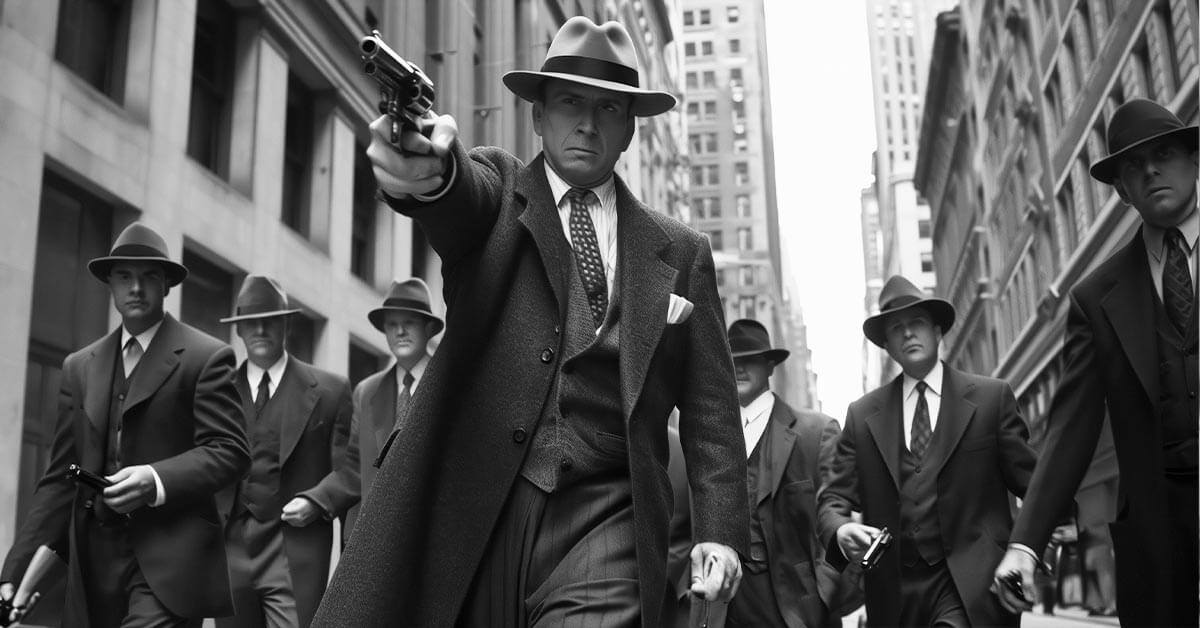In the late 1920s and early 1930s, St. Paul, Minnesota, earned a notorious reputation as a "Crook’s Haven." The city became a refuge for criminals of all kinds, from bootleggers to bank robbers, all seeking sanctuary from federal authorities. This period in St. Paul’s history is marked by a fascinating and dark blend of organized crime, corruption, and high-stakes intrigue.
St. Paul: The Crook’s Sanctuary
During Prohibition, St. Paul was considered one of the wettest cities in the nation, a haven for those looking to evade the law. The city’s criminal underworld thrived thanks to a unique arrangement between local gangsters and corrupt officials. This unofficial agreement, known as the Layover Agreement, began in 1900. Under this deal, police would warn criminals of potential FBI raids in exchange for bribes and an agreement from gangsters not to commit crimes within city limits (though nearby Minneapolis was fair game).
Leon Gleckman: The Jewish Al Capone
Among St. Paul’s most influential figures in organized crime was Leon Gleckman, a Jewish gangster who rose to prominence as the "Bootlegging Boss" of the city. Born on June 1, either in 1893 or 1894, in either Minsk (now Belarus) or Brody (now Ukraine), Gleckman’s family immigrated to America in 1903 and settled in Michigan. Leon, the third of seven siblings, was a self-taught salesman who started his career selling flowers before eventually becoming a traveling salesman.
Gleckman married Rose Goldstein in 1913, and by the time Prohibition began, he had established a powerful illegal empire centered in St. Paul’s Hamm Building. This six-story commercial building housed Gleckman’s St. Paul Recreation Company, which featured legal amenities like billiard games, cigars, a gym, and a boxing ring, masking the extensive illegal gambling operations that underpinned his fortune.
Gleckman’s influence extended to local politics. He helped secure the appointment of Big Tom Brown as chief of police. In return, Brown protected Gleckman’s interests, even facilitating international alcohol deliveries to local speakeasies.
The Kidnapping and Fall from Power
In 1927, Gleckman turned himself in to authorities, serving a year in prison before returning to St. Paul to resume his operations. His gambling business thrived, but his criminal activities continued to draw law enforcement attention. In 1931, Gleckman was kidnapped and held for ransom at a cabin in Wisconsin. The initial demand of $200,000 was quickly reduced to $5,000 plus the cash he had on him. The FBI suspected his rival, Jack Peifer, was behind the kidnapping, but Peifer’s cooperation with the authorities spared him from charges.
Gleckman’s criminal career faced setbacks when he was imprisoned again in 1936 for tax evasion and bribery. The FBI’s efforts to secure more substantial charges against him were thwarted by his death in a single-car accident in 1940.
The Barker-Karpis Gang: A Notorious Rival
At the same time Gleckman was making headlines, the Barker-Karpis Gang, led by Kate “Ma” Barker, was also operating in St. Paul. The gang, which included Ma Barker’s sons and notable criminals like Alvin Karpis and Charles Fitzgerald, took advantage of the Layover Agreement. They were infamous for their bank robberies and murders across the Great Plains.
The Barker-Karpis Gang’s most notorious crime was the kidnapping of William A. Hamm, president of Hamm Brewing Company. The ransom demands were made using the same building where Gleckman operated his illegal activities. Despite successfully receiving the ransom, the gang’s fingerprints on ransom notes led to increased FBI scrutiny. Their subsequent kidnapping of Edward Bremer Jr., president of a local bank, further fueled the FBI’s pursuit.
The gang’s attempts to evade capture led them to alter their appearances and flee to Florida. In 1935, Ma Barker was killed in a shootout with the FBI. Alvin Karpis, the last member to be caught, was apprehended in St. Paul in 1936. He served life in prison but was released in the 1960s and eventually died in Spain in 1979.
St. Paul’s Criminal Legacy
St. Paul’s criminal history is rich with colorful characters and dramatic stories. Beyond Gleckman and the Barker-Karpis Gang, other notorious criminals frequented the city, including Al Capone, Frank “Jelly” Nash, Baby Face Nelson, Machine Gun Kelly, and John Dillinger.
These figures and their exploits reflect a time when St. Paul was not just a city but a symbol of organized crime’s reach and the complexities of law enforcement and corruption.
Today, Hackamore Brewing in Chanhassen, MN, stands as a testament to the area's rich history, offering a unique backdrop to explore the past. Chanhassen’s proximity to St. Paul allows for a deep dive into this fascinating era of organized crime, where the legacy of figures like Leon Gleckman and Ma Barker continues to captivate historians and enthusiasts alike.





Leave a Comment